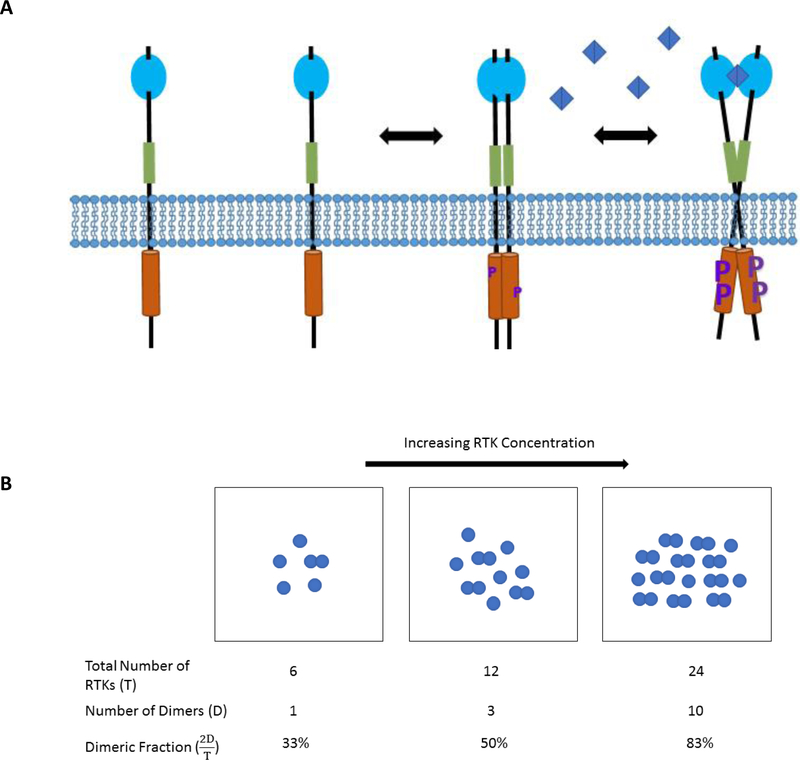Figure 2.
(A) A simplified model of RTK dimerization and activation for a generic RTK and ligand (blue diamond). Inactive monomers dimerize to form unliganded dimers with basal activity. Ligand binding induces a conformational change and enhances phosphorylation (purple P), leading to full signaling activity. The process can be fully described by thermodynamic cycles such as those in Figure 3. (B) Cartoon depicting the law of mass action for RTKs which exist in a monomer-dimer equilibrium. The single circles represent the RTK monomers, and the overlapping circles represent the RTK dimers (D). Three different RTK concentrations are depicted. As the total RTK concentration increases from left to right, so does the fraction of receptors which are dimeric. Dimeric fraction is defined as the fraction of total RTKs (T) which exist as a dimer: .

